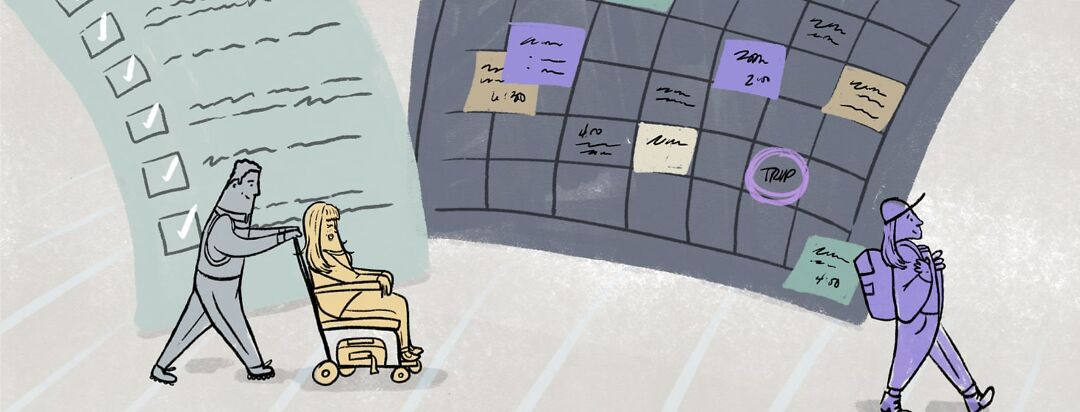Energy Conservation: Learning to Prioritize Physical Activities With RA
I was diagnosed with rheumatoid arthritis (RA) in the fall of 2016 at age 30, although in retrospect, I’d likely been dealing with the disease for most of my life. As someone who has struggled more with lower limb pain, stiffness, and swelling, I’ve had to learn how to prioritize physical activities — especially since becoming a mother.
My social and physical batteries drain quickly
My lessons in energy conservation really started during our fertility treatments. I learned firsthand that managing my energy levels was paramount to avoid increasing my symptoms.
There were some activities or events I really wanted to attend, and I did, knowing that it would take a few days to physically recover from the energy expenditure — especially when those events involved a lot of standing, walking, and moving around. That doesn’t even include my social battery, which drains quickly these days, and which begins to impact my physical health once it gets low enough.
Strategies for conserving and prioritizing energy
In order to conserve energy and try to maintain a balance of "decent" days with RA (rather than more of an up-and-down good day versus bad day situation), I’ve learned some strategies to help me manage my approach.
Taking stock of my energy levels
Take stock of my energy levels. This must involve thinking about not just the day ahead, but the next few days or the next week. It requires me to think about when I seem to have the most energy (in the mornings) and when/how I can "recharge" my batteries when I feel less energetic. Sometimes, that time of day — or those days in general — require staying home and resting. Over time, I’ve come to be more flexible with essentially "rolling with the punches" or adjusting my plans when I have unforeseen fluctuations in my overall energy levels.
Prioritizing activities
This has become really important especially as my daughter has gotten older. She likes to know the next day's plans before bed each night, and she gets really disappointed if things change or if I can’t do certain things on the day of.
So, we started a practice where we sit down together and we make a list of the upcoming activities on my calendar, on her calendar, and on our family's calendar. We then talk about which activities are most important for her (and therefore for me to be present at) versus the ones in which she wouldn’t mind missing, or having just her dad or our nanny take her instead of me.
This always makes me feel better — putting forth my best efforts in order to support her and giving myself the grace to take care of myself without feeling like I’m letting her down.
Pacing myself
In addition to prioritizing, I try hard to pace myself — never scheduling 2 events back to back in the same day, or even 2 big events 2 days in a row. I know that building in rest periods is critical, and without the chance to recharge I’ll miss out on way more than what I’d like to. This has been really frustrating for me at times, but it’s also of the utmost importance in keeping a gauge on how much energy I truly have to "spend."
Energy-saving techniques and devices
I’ve shared before about using a wheelchair at larger events in order to not just conserve energy, but to manage the arthritis symptoms in my knees and hips. Using any sort of assistive devices to reduce energy usage can be helpful in conserving what you do have to use for the higher priority moments/activities/events.
Remembering the simple things
Things I normally do to manage my RA besides medication include consistent stretching/simple movements, meditation, stress mitigation, a balanced diet, proper hydration, and sleep management. These are of extra importance when I think about conserving my energy. These things help me to have any sort of energy supply at all, and without them, I’d be much more limited. So, I try not to just practice them, but to be grateful that they exist, and that I’ve learned how to apply them to my own body.
Remaining flexible
Unfortunately, I’ve also learned that sometimes, I just have to adjust as needed, being flexible with listening to my body and adjusting my plans accordingly. This one has been the hardest one to accept as a mother who doesn’t want to miss a single moment of my daughter’s life, but there have just been times (as I assume there will continue to be) where I will need to rely on photos, videos, and FaceTime to participate or witness certain moments if I can’t be there in person.
What energy-saving strategies work for you?
By trying to use these strategies, I feel like I spend quite a bit of mental energy each day trying to effectively prioritize my physical activities while living with RA.
Have you noticed any of the above to be particularly helpful in your own energy conservation? Are there other practices you incorporate that I should add to the list above? Comment below and let me know!

Join the conversation